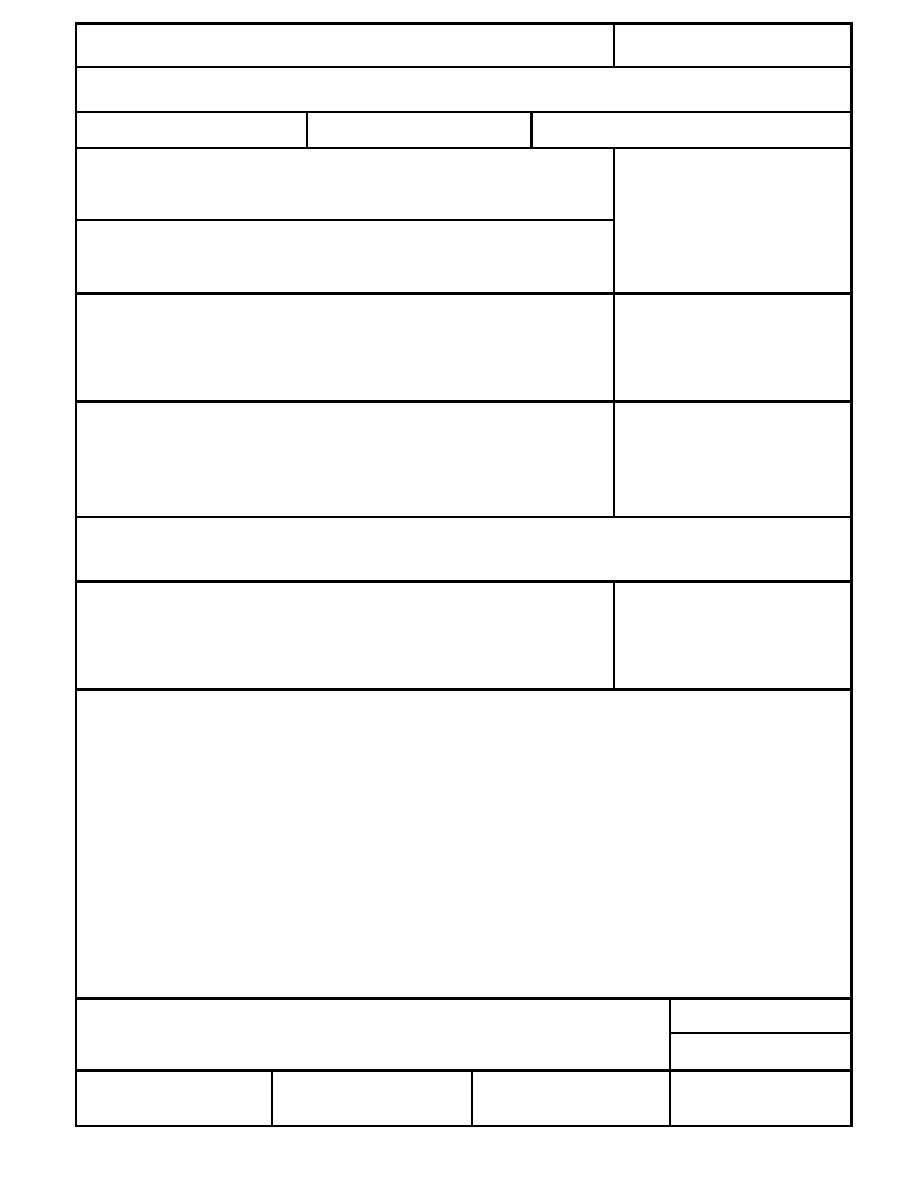
Form Approved
REPORT DOCUMENTATION PAGE
OMB No. 0704-0188
Public reporting burden for this collection of information is estimated to average 1 hour per response, including the time for reviewing instructions, searching existing data sources, gathering and
maintaining the data needed, and completing and reviewing the collection of information. Send comments regarding this burden estimate or any other aspect of this collection of information,
including suggestion for reducing this burden, to Washington Headquarters Services, Directorate for Information Operations and Reports, 1215 Jefferson Davis Highway, Suite 1204, Arlington,
VA 22202-4302, and to the Office of Management and Budget, Paperwork Reduction Project (0704-0188), Washington, DC 20503.
1. AGENCY USE ONLY (Leave blank)
2. REPORT DATE
3. REPORT TYPE AND DATES COVERED
August 1997
4. TITLE AND SUBTITLE
5. FUNDING NUMBERS
Increasing Cold Weather Masonry Construction Productivity
6. AUTHORS
Charles J. Korhonen, Robert D. Thomas, and Edel R. Cortez
7. PERFORMING ORGANIZATION NAME(S) AND ADDRESS(ES)
8. PERFORMING ORGANIZATION
REPORT NUMBER
U.S. Army Cold Regions Research and Engineering Laboratory
72 Lyme Road
Special Report 97-16
Hanover, New Hampshire 03755-1290
9. SPONSORING/MONITORING AGENCY NAME(S) AND ADDRESS(ES)
10. SPONSORING/MONITORING
AGENCY REPORT NUMBER
Office of the Chief of Engineers
Washington, D.C. 20314-1000
For conversion of SI units to non-SI units of measurement consult Standard Practice for Use of the
11. SUPPLEMENTARY NOTES
International System of Units (SI), ASTM Standard E380-93, published by the American Society for Testing and Materials,
1916 Race St., Philadelphia, Pa. 19103.
12a. DISTRIBUTION/AVAILABILITY STATEMENT
12b. DISTRIBUTION CODE
Approved for public release; distribution is unlimited.
Available from NTIS, Springfield, Virginia 22161.
13. ABSTRACT (Maximum 200 words)
The thermal protection requirements for cold weather masonry, as established in current industry specifica-
tions, were evaluated. Experiments were conducted to define the most relevant factors in the process of
freezing of newly placed mortar. The effect of unit absorption on the moisture content of mortar during the
first hours after assembly was assessed. Correlations of moisture content with time were developed for
mortar in contact with masonry units. Frost immunity thresholds in terms of mortar moisture content and
in terms of maturity were determined. The test results provided the basis for new proposed guidance on
when fresh mortar can be safely exposed to freezing temperatures. Test methods for evaluation of the
freezethaw resistance of masonry units were evaluated. A new test was proposed and adopted by ASTM
as a new standard test for the freezethaw testing of masonry units. In addition, several chemicals were
evaluated for their potential as antifreeze admixtures for masonry mortar. Antifreeze admixtures were first
developed for use in concrete, but the practicality of using antifreeze admixtures in masonry mortars was
demonstrated in a field application in Michigan during the winter.
14. SUBJECT TERMS
15. NUMBER OF PAGES
58
Antifreeze admixture
Thermal protection
Cold-weather masonry
Winter construction
16. PRICE CODE
Freezethaw
17. SECURITY CLASSIFICATION
18. SECURITY CLASSIFICATION
19. SECURITY CLASSIFICATION
20. LIMITATION OF ABSTRACT
OF REPORT
OF THIS PAGE
OF ABSTRACT
UNCLASSIFIED
UNCLASSIFIED
UNCLASSIFIED
UL
Standard Form 298 (Rev. 2-89)
NSN 7540-01-280-5500
Prescribed by ANSI Std. Z39-18
298-102



 Previous Page
Previous Page
